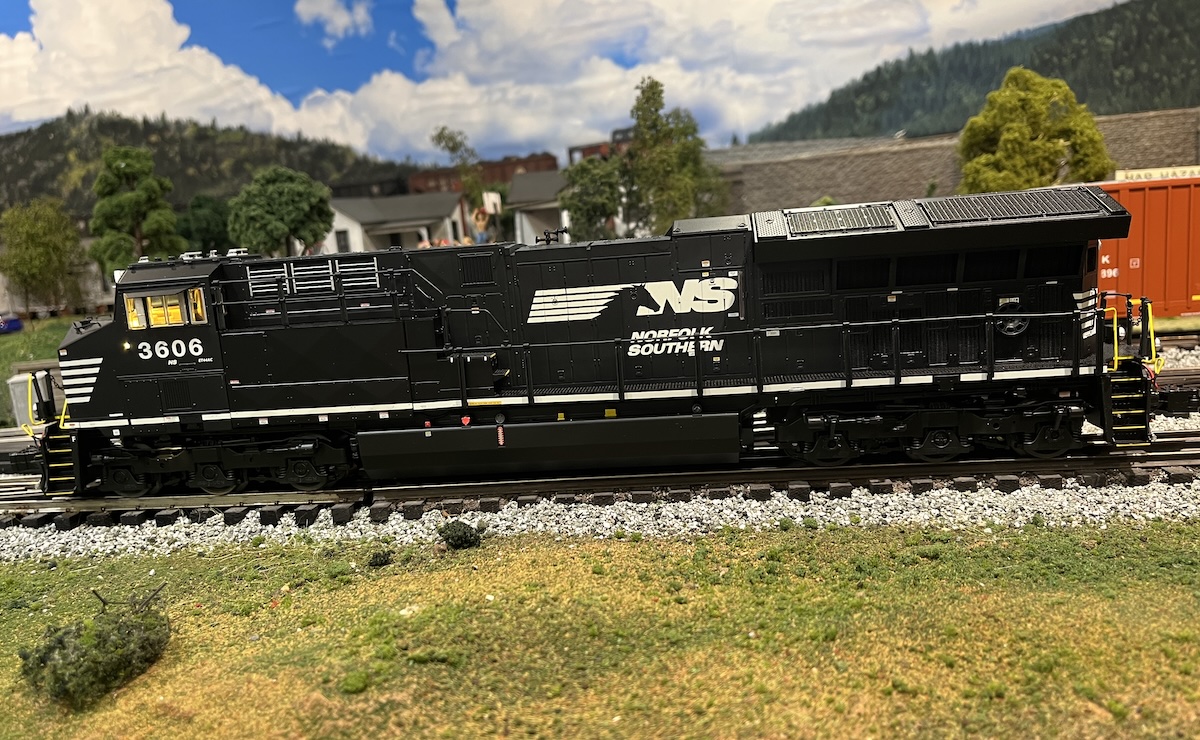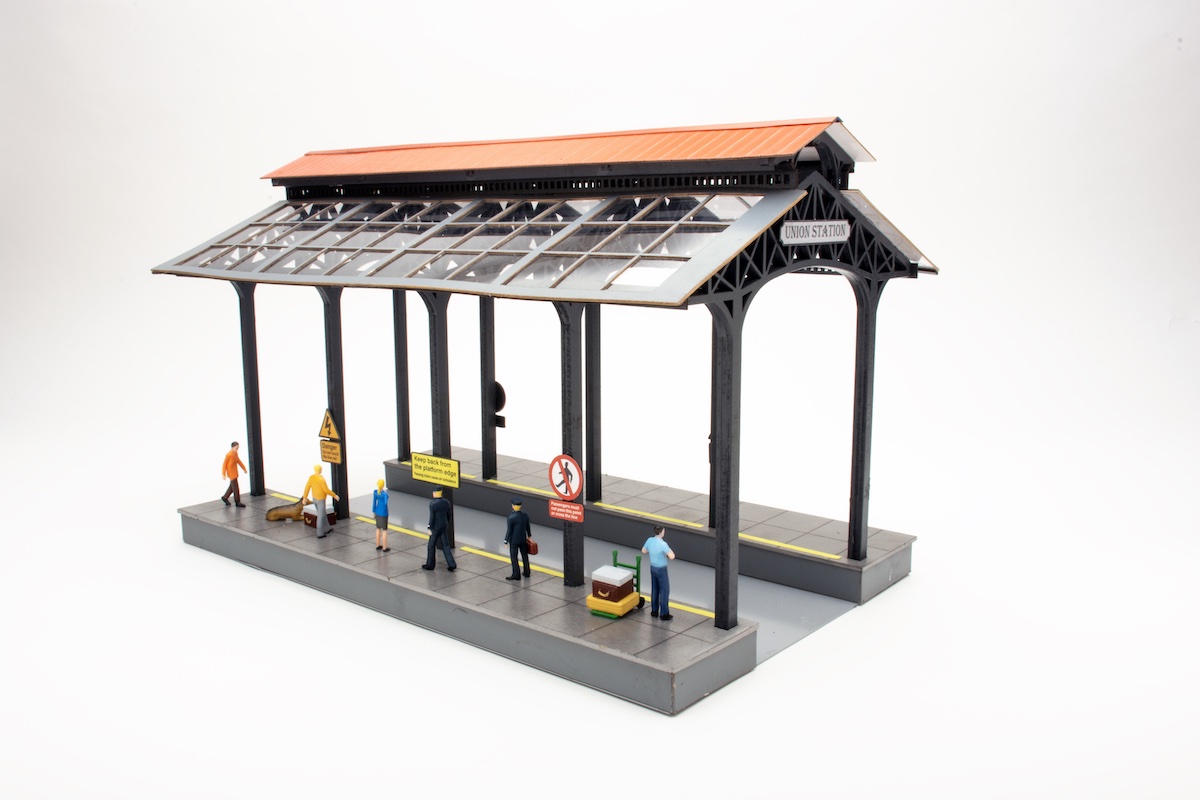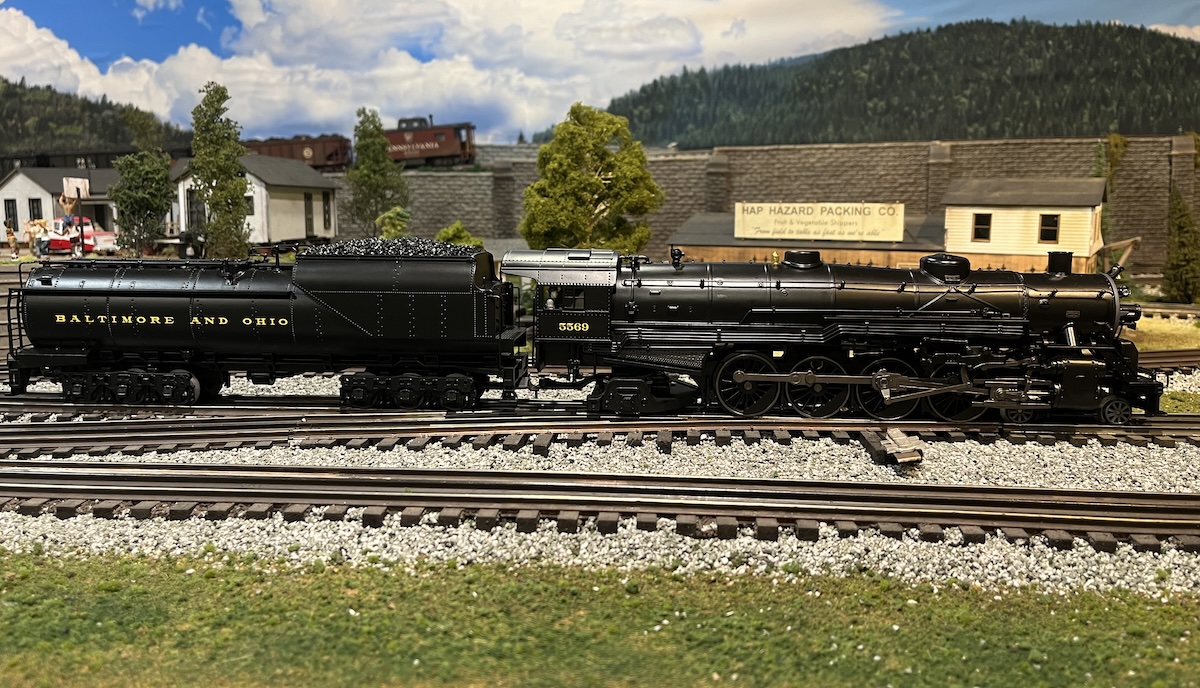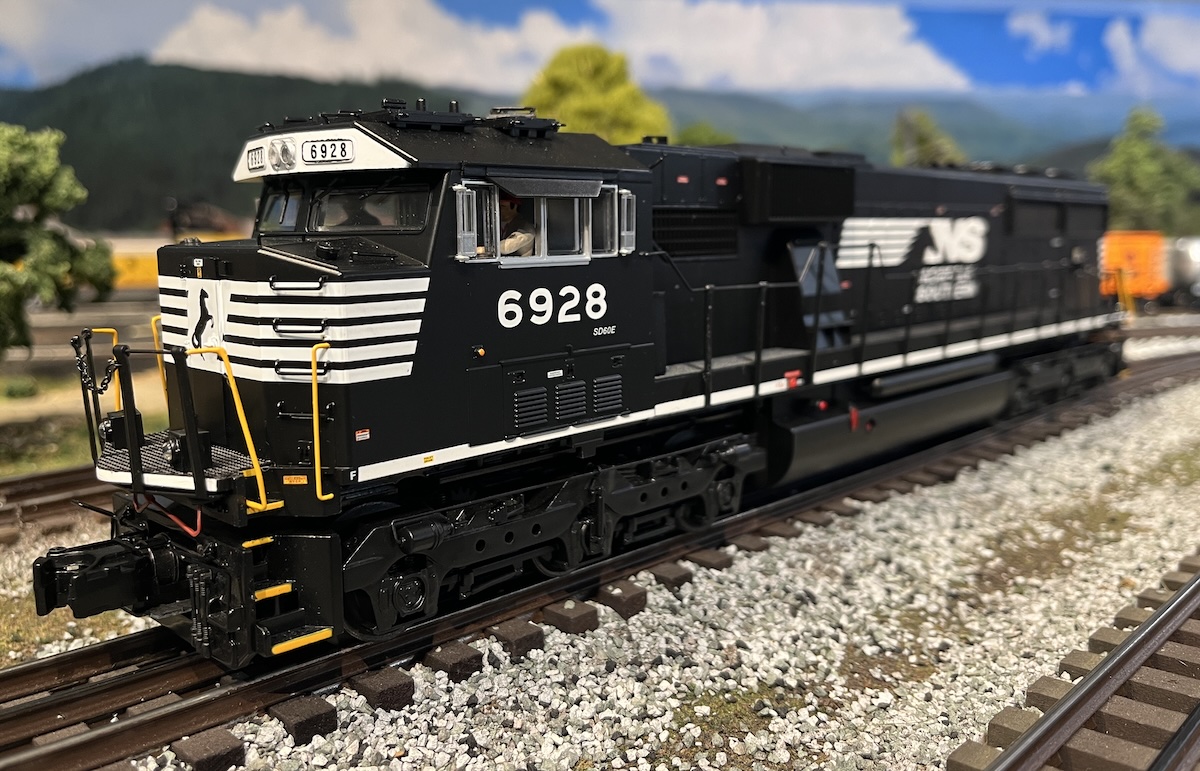The Pennsylvania had an eclectic mix of locomotives, and the P5 class motors were a mainstay of its operations. The P5 was a 2-C-2 (two unpowered axles-three powered axles-two unpowered axles) boxcab propelled by three twin motors of 1,250 horsepower each. Geared for 90-mph operation, passenger transportation was its initial mission. The boxcab design came first, but the line was redesigned with a cab in the center of the carbody, and the final 28 were streamlined.
The P5s were displaced by the venerable GG1, but only because of heavier passenger trains and tight schedules – not any shortcoming of the P5-class. They became a mainstay of the freight fleet until the last of them left the roster in the early 1960s.
Opening the box
Although the shape of the P5a boxcab bears a strong resemblance to a plastic cheese storage box, don’t let that fool you. This model illustrates the high level of detail that can go into a die-cast metal diesel or locomotive shell. The first thing that stood out was the 10 sets of see-through vents, or louvers, along the sides of the locomotive. When I spotted them, I figured they’d be solid, cast-in details, but nope, MTH took the extra step with finely detailed inserts!
The business ends of this locomotive have a lot to offer. I was intrigued by the Pennsy-style “cow-catcher” tucked beneath the deck and steps. The Pennsy was the road known for standardization, and it looks like this appliance would have fit just as well on a K4 steamer as on a P5 electric!
The face of the pilot has brake and multiple-unit lines, along with a simulated uncoupler arm. The deck on the pilot seems a bit snug, but from scoping out prototype photos of the P5 I realized that it looks pretty close. I guess motormen were skinnier back then!
I liked the representation of the handrails/grab irons snaking upward from the top step, beneath the window, and then up the doorframe. The face has three windows (two on each end with wiper arms) and a cast-in door (the MTH product description states that the model has opening doors). Above the doorway is a large headlight with illuminated number boards. Marker lights are on the corners of the cab.
Each cab has a crew figure. The side windows are two-pane, with a single sliding pane, and they have safety bars (bars for crew protection from thrown objects) on the exterior.
The sides of our P5a have the aforementioned vents as well as small dimples marked “sand fill” up high. The lines of rivets are as straight arrow as they get, and the seams are clear and crisp. An assortment of sand lines, conduits, and pipes are located just beneath the edge of the shell.
Safety chains connect the steps to the lead truck and the lead truck to the frame of the drive-wheels, from the drive wheel frame to the rear truck. They also link the rear truck to the rear steps in an intricate manner.
The rooftop of the P5a has some interesting details (beyond the pantographs, of course). These include a considerable number of latches on the roof “holding down” the area beneath the pantographs and a hatch area over the center. Simulated electric lines rise up and over the center, where the bell and whistle are, and then rise from the edge of the roof and proceed down the front of the locomotive’s face and into the cab on both ends.
The smoke unit and volume controls are hidden beneath a magnetic panel just ahead of the pantograph.
The model has two power pickups that are 5¼ inches apart.
On the test track
The locomotive operated smoothly and quietly. Our low-speed average was 2.78 scale miles per hour, and the high-speed average was 62.9 scale miles per hour. Drawbar pull on our sample P5a was 1 pound, 7 ounces
Perhaps the most distinctive element of the P5a is the operation of the pantographs. When you power up the locomotive, its rear pantograph raises. When you change directions, the opposite pantograph raises; once it’s in place, the first pantograph lowers.
I have a fuzzy memory that when we tested our first model with the self-raising pantographs (MTH’s Little Joe electric) you had to install them yourself, and depending on how well you placed them, they raised either flawlessly or intermittently (due to operator error).
Well, the pantographs on the P5 come installed. All you need to do is lift the pantograph by the top bar to unlock the moving arms from their secure shipping position. They worked correctly and in sequence each and every time we ran the P5a.
The sound system of our P5a was fine. The whistle is fairly distinctive – high-pitched, irritating, and sure-to-get-the-fishermen-off-the-trestle-in-time.
The model has a smoke unit (representing a steam boiler for passenger-car heating) that let out a big “poof” of a white smoke ring, which I thought was pretty neat.
The Premier line P5a is another notable addition to the stable of electric locomotives offered by MTH. It is solidly constructed and delivers good performance. If you have an eye for pantograph-equipped power, get down to your local hobby retailer and check it out.
Price: $799.95 (20-5619-1)
Features: O-42 operation, die-cast metal shell, two can-style motors, coil couplers, automatic pantograph operation, speed control, ProtoSound 2.0.
Staff comments: Very well constructed: Solid, rugged, runs like a deer. – Bob Perfect for modelers who want to show the transition on the Pennsy in the years before the GG1. – Roger














I am enjoying every time it goes by. Reminds me when we
fished in the Susquehanna I would watch as they double-
headed down the line to Port Deposit. Great runner.
this p-5 is truly a beauty, and I thought the gg-1 was nice, this unit has more detail and a lot more character.
My hat off to MTH for modeling a very distinctive electric locomotive. From the picture and the reviewer's comments, this is a keeper, whether you run it or not. This electric, paired with a Little Joe, would really set your layout/collection apart from the rest.
Now, if MTH would only make a CUT P-1a (not the reworked NYC P-2a), then we would have something.
IT is what an electric locomotive should be.